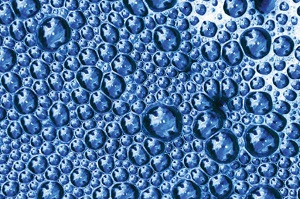Question:
What Detergents Used in Proteomics?
The Protein Man Says:
 The solubilization of proteins wouldn't be complete without detergents. Their amphipathic structure and unique properties in aqueous solutions make them the perfect agent for releasing (solubilizing) proteins from lipid membranes.But how is this actually achieved?
The solubilization of proteins wouldn't be complete without detergents. Their amphipathic structure and unique properties in aqueous solutions make them the perfect agent for releasing (solubilizing) proteins from lipid membranes.But how is this actually achieved?
How Detergents Work – A Quick Glimpse at the Basics
Detergent molecules are amphipathic in nature. They contain a hydrophilic polar head group which interacts with the hydrogen bonds of the water molecules and a hydrophobic tail which binds with protein hydrophobic domains.
When the detergent is introduced into the lysate, its molecules insert themselves in the lipid membrane and begin separating the lipid bi-layer. As the detergent's concentration increases, the lipid bi-layer becomes saturated with detergent molecules and then starts breaking apart producing protein-detergent complexes and detergent-lipid micelles in the process.
It is interesting to note that while detergents start to form highly organized spherical structures (micelles)in aqueous solutions, as it reaches its Critical Micelle Concentration (CMC), they tend to form reverse micelles in non-aqueous solutions and/or in the presence of hydrocarbon solvents instead.
Classification of Detergents
In general, detergents can be classified as follows:
- Ionic.Ionic detergents are ideally used for completely disrupting the cellular structure as well as for denaturing a wide variety of proteins for separation during gel electrophoresis. Some of the most commonly used ionic detergents include the anionic detergents sodium dodecyl sulfate (SDS) and deoxycholate, and the cationic detergent hexadecyltrimethylammonium bromide(CTAB).
- Non-ionic.Non-ionic detergents have an uncharged hydrophilic head group and are usually based on polyoxyethylene and/or glycoside. Due to their non-denaturing properties, these detergents are commonly used in isolating biologically active membrane proteins and are most effective in breaking lipid-lipid and lipid-protein interactions. The Triton, Tween and Brij series are great examples of polyoxyethylene-based non-ionic detergents while octyl beta-glucoside and the MEGA series detergents are perfect examples of glycoside-based non-ionic detergents.
- Zwitterionic.Zwitterionic detergents protect the native charge of your proteins of interest and are best used for isoelectric focusing and two-dimensional gel electrophoresis. Some of the most common detergents belonging to this class includes CHAPS or 3-[(3-Cholamidopropyl)dimethylammonio]-1-propanesulfonate, CHAPSO or 3-[(3-Cholamidopropyl)dimethylammonio]-2-hydroxy-1-propanesulfonate, sulfobetaine (SB 3-10, 3-12 and 3-14), Amidosulfobetaine-14 (ASB-14) and Amidosulfobetaine-16 (ASB-16).
For additional information, please refer to our Detergent Handbook, which you can download for free.







